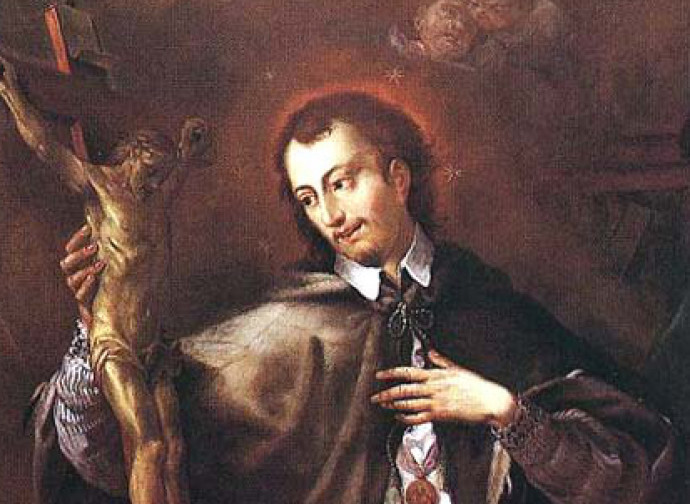Saint John Nepomucene
Martyr for the freedom of the Church and patron saint of confessors, he was a “grand figure” who “has examples and gifts for everyone” (John Paul II)

When crossing a bridge or walking along a riverbank in certain European countries, it is not uncommon to come across a statue of Saint John Nepomucene, martyr for the freedom of the Church and patron saint of confessors, a “grand figure” who “has examples and gifts for everyone”. (John Paul II). He is called Nepomucene because he was from Nepomuk, in Bohemia. He was born around 1345, studied theology and law at the University of Prague and then continued his education in Padua, where he graduated in Canon Law in 1387. Fourteen years earlier he had received holy orders, and he began to hold various ecclesiastical offices with great humility, as secretary to the archbishop, archdeacon, and parish priest, until he became canon of the famous Cathedral of St. Vitus and vicar general of the archdiocese of Prague.
It was in Prague that his life bore witness to his love for Christ and the Church. Due to his brilliant preaching he also became a preacher at the court of Wenceslaus IV, King of Bohemia and Germany. However, he did not hesitate to vigorously oppose the sovereign when the latter decided to violate ecclesiastical freedoms. Wenceslaus had ordered that the monastery of Kladruby be transformed into an episcopal seat at the death of abbot Racek in 1393, as he wanted to choose the next incumbent. But John, aware of the serious threat to canon law, resisted the king's attempt and approved the monks' election of the new abbot. This enraged Wenceslaus, who had the saint and three other ecclesiastics thrown into jail. All four were severely tortured to force them to comply with the king's demands: they all succumbed, except John.
The persecutors continued to torture the Nepomucene with all sorts of torments, to the point of scorching his sides with torches. But still the saint did not give in. In the end, as John lay dying, Wenceslaus ordered him to be thrown in chains into the Vltava, the river that runs through Prague. It was the night of March 20, 1393. The whole city learned of the crime the next morning, when John’s body was found washed up on a riverbank surrounded by an extraordinary light. As many as four contemporary documents attest to these facts (centuries later, in the Protestant circle, attempts would be made to deny them). The first is a document that accuses the king, presented to Boniface IX on 23 April 1393 by Archbishop John of Jenštejn, who had personally travelled to Rome with the new abbot of Kladruby. In Prague the Charles Bridge soon became a place of worship, and the plaque commemorating the exact spot from which the saint was thrown into the river is still visible today.
About sixty years after his martyrdom, another indictment emerged in some historical annals. In spite of Wenceslaus' repeated requests to John to reveal the sins of his wife, Joan of Bavaria (1362-1386), who had chosen him as her spiritual director, John refused to violate the secret of Confession, rejecting both the flattery and the threats of the sovereign. The corrupt king, whose vices included the abuse of alcohol, mistrusted his wife, despite the fact that she was considered extremely pious and devout. Since the queen had died seven years before the death of the Nepomucene, this incident could have contributed to the king's subsequent fury against the saint, who is also venerated as a martyr to the Seal of Confession. Saint John Paul II was always particularly devoted to him and pointed to him as a model for seminarians and priests.
Patron of: confessors, Bohemia; invoked against floods and drownings;
Read more:
Letter of John Paul II for the 250th anniversary of the canonization of John Nepomuk (1979)




